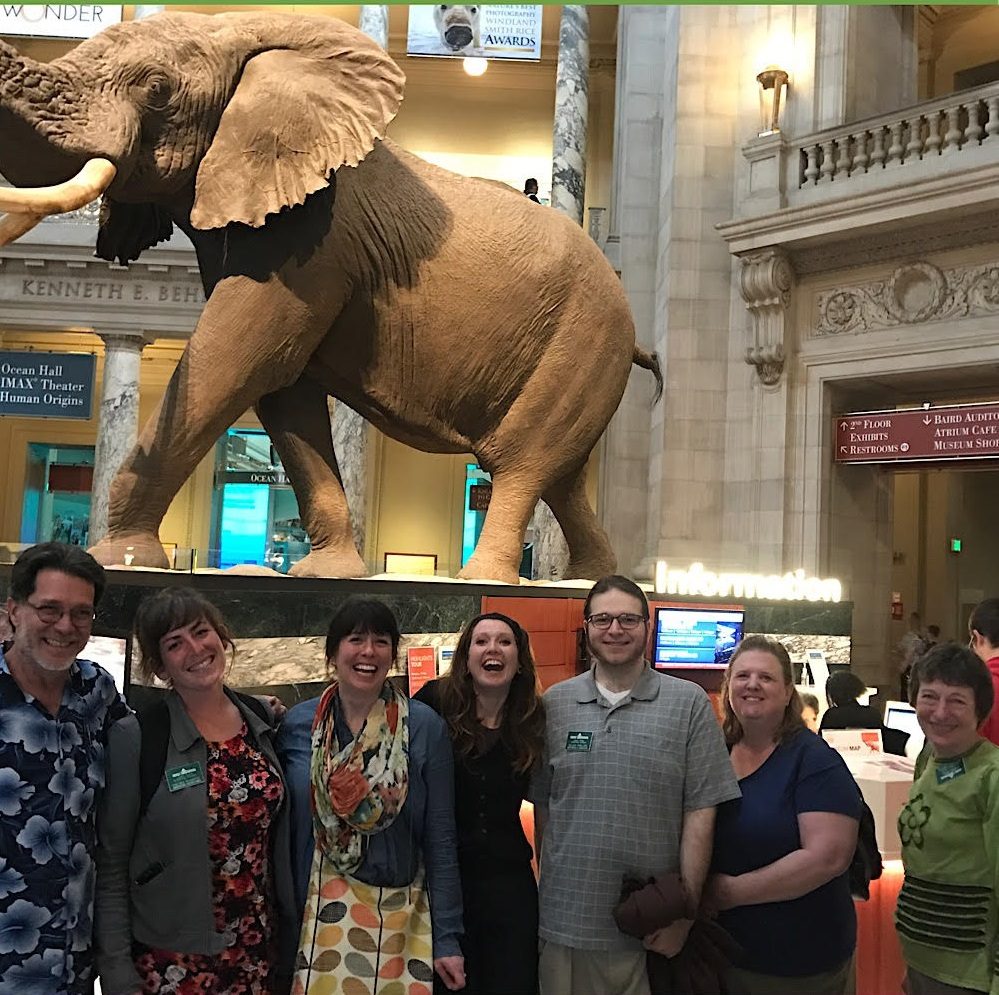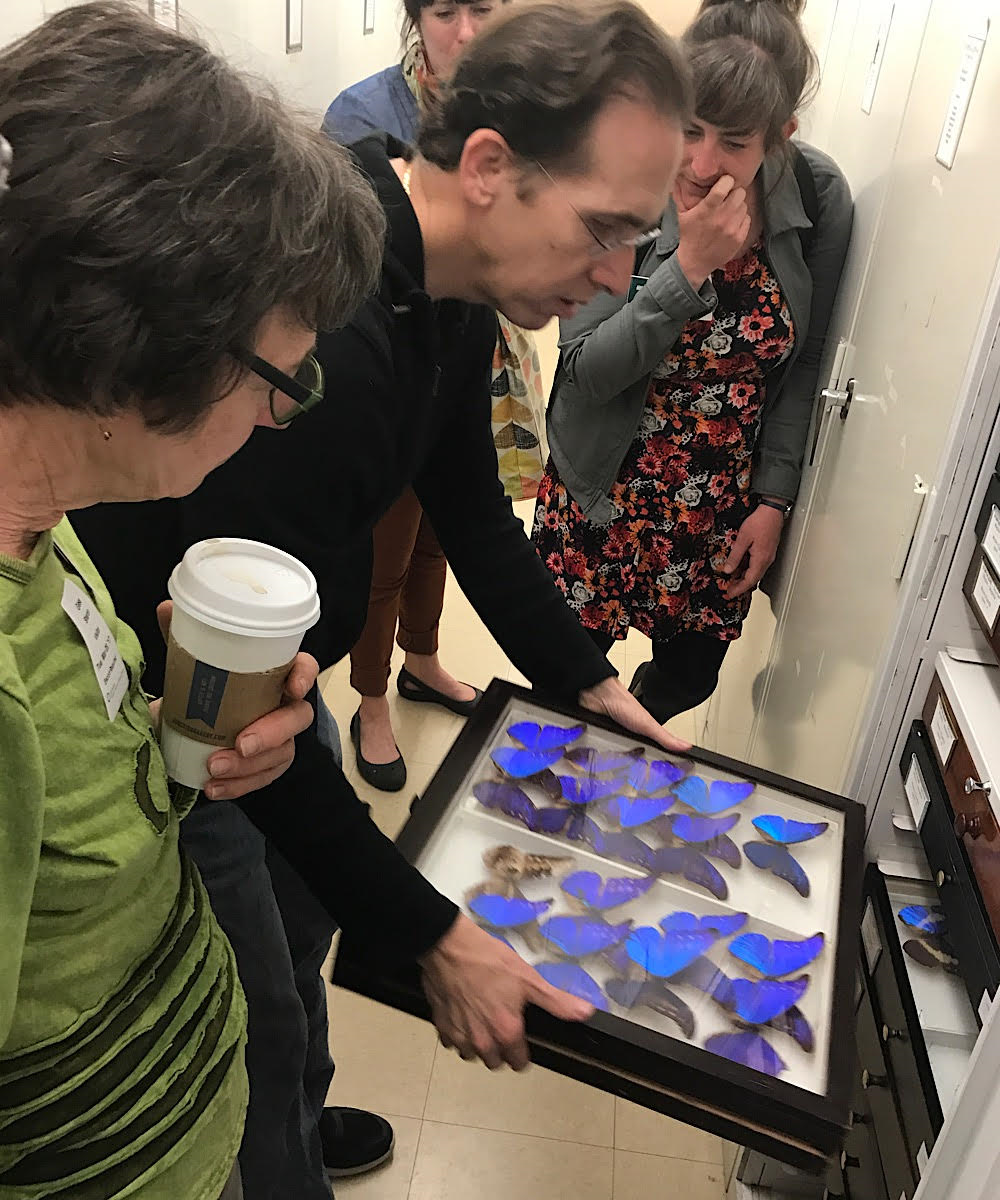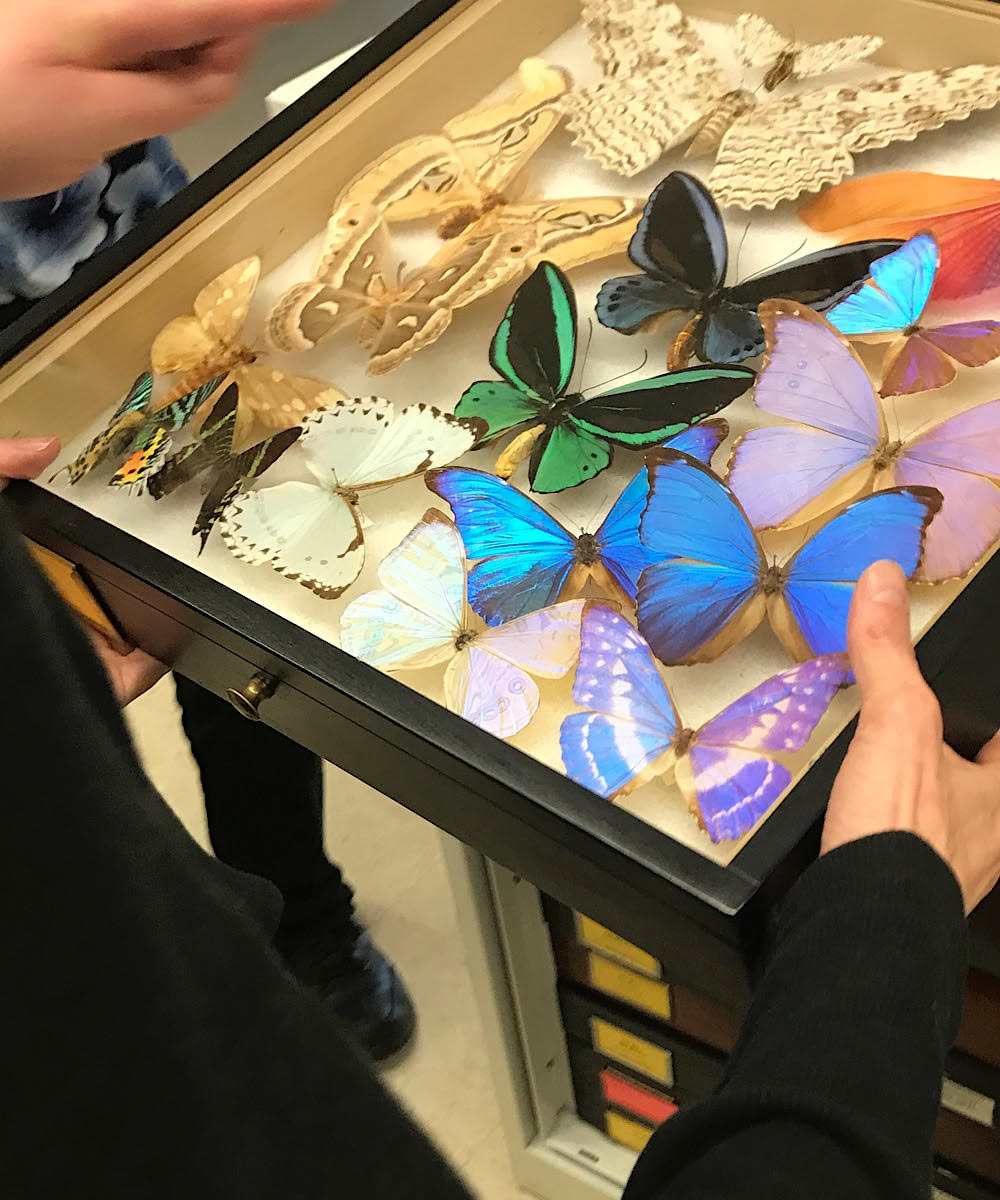A Butterfly Field Trip!
I can hardly believe that it is officially butterfly season! It seems like only yesterday when all the butterfly curators, along with Exhibition Manager Kristin Thoroman, and Conservatory Horticulturist Chelsea Mahaffey took a butterfly field trip to the Smithsonian Institution National Museum of Natural History.

From left to right: David Simpson, Chelsea Mahaffey, Kristin Thoroman, Lauren Adelman, Elliott Phillips, Jean E. Beard, and Sherry Giese in front of the famous Smithsonian National Museum of Natural History elephant.
Charles Eric Wenzel, the Butterfly Pavilion Lead at the Office of Education and Outreach for the Smithsonian’s Butterfly Pavillion, took us through their year-round exhibit and on a special behind-the-scenes tour of their emergence chamber.
Wenzel graciously answered our questions and explained their methodology for successful butterfly rearing. We also admired their rotten fruit display and interpretive signage. We even met an amazing volunteer who shared some of the finer points of butterfly etiquette with us.
We made sure to stop by the Insect Zoo, where I was elated to see that they still show off the giant hissing cockroach, as well as many other wonderful creepy crawlies. We couldn’t stay too long though, as we had a meeting with Research Entomologist, Stuart H. McKamey, of the Systematic Entomology Laboratory. One of my fellow curators, Elliott Phillips, was a formerly a research contractor here and worked with McKamey. Those two were eager to catch up, but invited the rest of us to tag along. To our delight, they surprised us with a behind-the-scenes tour of the Smithsonian Institution’s insect collection! It is hard to convey just how incredible this enormous collection is, but I will try. There are four floors of nothing but row-after-row of insect cabinets. The newest ones are high-tech and engineered for space efficiency,
sliding together on automated gears to open, and the floor is weight sensitive, so nobody can ever be squished between the cabinets.

Stuart McKamey pulls a tray of pinned blue morpho butterflies out of the its cabinet and we are simultaneously drawn in and blown away by their iridescence!
McKamey showed us his favorite shelves — from his current work with tree-hoppers, to his personal “Oh My” cabinet, and all the Lepidoptera in between. We could have spent all day with McKamey, listening to him recount his adventures of collecting these exotic creatures from far off places and following through the collection of the world’s riches, but we were excited to return to Richmond and get ready for our first shipment of chrysalides arriving the very next day!
Looking back on our field trip to the Smithsonian Institution, I find myself profoundly thankful for this very special experience. Field trips offer an amazing opportunity for hands-on learning, building relationships, and developing new skills. We hope that many of you are able to visit Butterflies LIVE! on your very own butterfly field trip. Me and the other butterfly curators will be waiting for you, and excited to share our enthusiasm for these amazing creatures with you.
Thank you for allowing me to share my experience of our own butterfly field trip. We hope to see you soon! Butterflies LIVE! is open 9 a.m. to 5 p.m. daily (last group of visitors enters the exhibit at 4:45 p.m.) through October 15, 2017.

